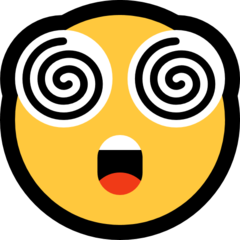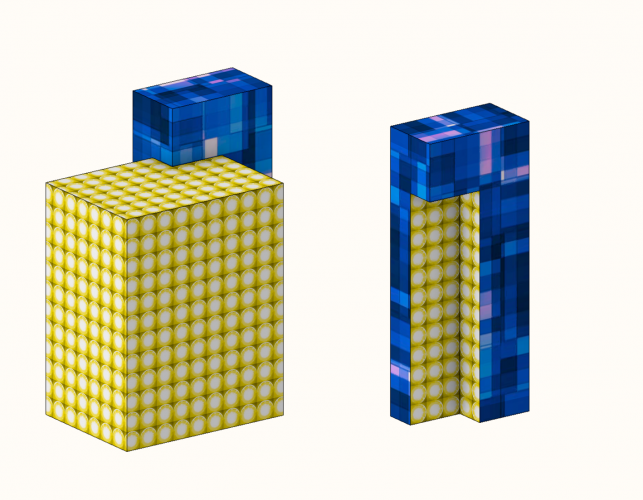-
Posts
804 -
Joined
-
Last visited
Content Type
Profiles
Forums
Events
Articles
Marionette
Store
Posts posted by Kaare Baekgaard
-
-
99 % of all image props in my workflows have the same settings when it comes to masks. If there is an alpha channel present in the image, that is what I use.
But it takes a frustratingly high number of clicks to get there:
Click use mask, click create mask, click reuse an image from another source, click alpha channel, click ok, click ok again.
If there is an alpha channel present in the imported file, I wish VW would just select that by default, so that I can just click OK once, unless i need something out of the ordinary.
-
 1
1
-
-
I can do a lot of formatting on callouts, but I cannot pre-assign a different class than the active one.
Dimensions do this automatically - they use the dimension class.
I want the same with callouts - I want their class to be 'Dimensions', or I want them to be in a class of their own.
i wish VW would add this little feature to the Callout Preferences.
-
Thanks for the answers, Zoomer.
Sorry for the rant, there are two preferences menu item, and I was looking in the wrong one.
-
The menu item is greyed out and I need to turn it on.
How do i do that?
Where is the 'legacy tab' - and why is it legacy, when it is absolutely essential?
Not much help in the help section...
-
 1
1
-
-
On 9/24/2021 at 3:47 PM, Shengxi Wu said:
Hi @Kaare Baekgaard, thanks for the feedback. I am trying to reproduce the bug and it seems that those unwanted texture overrides will appear as soon as you perform a boolean operation among two textured objects. This is a bug for sure. I will submit a bug report to document this behavior.
I am not sure how the latter part of your description ("give the new object textures by changing its class") would affect this, please see the video attached below and let me know if I've missed anything.
By default all new objects, that I make, have their texture assigned by class. I think most users work this way. So when I change the class of an object, I change its textures. Preferably all of them (always!). I may assign an override on purpose after that, but never before.
-
On 9/24/2021 at 4:13 PM, Andy Broomell said:
The result does seem odd when the texture on the two original objects is the same texture, but if those two textures were different to begin with, the fact that the resulting Solid Addition could still display both textures is actually a useful new feature of 2022 that I didn't realize existed. So perhaps the only change should be that *if* all textures in the operation are the same, then all faces are assigned to "Overall" and there are no overrides.
Interesting results too when doing solid subtractions of different textures. Cool!
Cool? Sure in a novelty kind of way. Useful? Not really.
-
When I use an existing textured object to create a new object - by shelling or using boolean operations – and then give the new object textures by changing its class – I get unwanted texture overrides. Leftovers from its earlier incarnations so to say, that I then have to delete.
This is a bug.
-
 2
2
-
-
On 11/26/2017 at 8:10 PM, markdd said:
Or even to be able to use the Split tool to separate them....
You can use the split tool, if you do it along a planar surface. It has to 'touch' one of the objects...
-
On 9/16/2021 at 4:26 PM, Shengxi Wu said:
but also a more robust way to select faces
You could just start with 'Add Tangent Faces'. This - and Add Single Faces to selection would probably suffice for 95% of all users 🙂
-
16 hours ago, Shengxi Wu said:
Hi @Kaare Baekgaard, thanks for your feedback.
I get that Shengxi - but I am allowed to wish 🙂
While we are at it, I played around with the render tab of the OIP – And i noticed, that I now have much better control over the old, estranged Add Decal feature, which I think has been largely unused since it was conceived. (The nice trick is to add the decal to a texture override face)
This could become useful. Except that the decal does not show up in the Shaded/Opengl render mode, but only in the Renderworks mode.
I hope, that this is an easy fix, and if so I wish you would fix it.
-
Panoramic backgrounds do not crop in perspectives in design layers - and they are shown differently in shaded representation as compared to renderworks representations.
Does anyone know how to fix/change this?
-
10 hours ago, Ian Lane said:
Kaare,
Sorry to hear that you've been having trouble with the feature. Early on we made some changes to make it harder to accidentally detach the tabs but some users reported that they were still having problems, while many other didn't have an issue at all.
As Andy shared (thanks!), we added a new Lock tabs option in the utility menu of the palettes. When this is turned on you won't be able to detach or rearrange the tabs. Turning this on won't set things back to the way that they were, so you can move tabs around or detach them and then lock them how you want them to avoid accidental changes in the future.
Hopefully this helps you out and thanks for your continuing feedback.
-Ian
I meant tabs, Ian. I am not a native english speaker, so some words become muddled.
Thanks 🙂
-
-
8 minutes ago, markdd said:
Once you have shift-clicked, the new tool would have already textured the faces because the cursor holds the texture. Don't you think your wish adds extra clicks? You can select multiple faces of an object from the Object Information Palette and that way you can swap out textures or do some of the rudimentary mapping that the Object Information Palette allows.
I think the new Texture Tool is very intuitive and has been extremely well designed.
I do not disagree, but the objects that I work with often have hundreds of faces and the textures are subtle and do not give a lot of instant feedback. The wish is quite reasonable, if you consider it again.
-
We must have gotten this in VW 2022?
I cannot find it, where is it?
-
The new Texture tool is a welcome addition, and it is almost great.
I wish we could shift-click to add faces to a selection - like we do when we add faces to a Shell Solid selection.
I really, really wish I could add all tangent faces to a selection.
This would be extremely useful for displaying different textures for the inside and outside surfaces of a shell - or a lamp.
-
I do not wish that 'top level dimensioning' should replace the annotation layer, but supplement it.
Besides dimensions, I use the annotation layer for all sorts of stuff like 2D section details.
But I often have several viewports in one sheet - and I reuse them all the time by duplicating a sheet - and then change the layer setting of the viewports to reflect a different component.
For that purpose - among several, it would be nice to just delete all dimensions on the sheet and start on a clean slate.
There should probably always be more than one way to achieve functions, that are performed so regularly as dimensioning.
To be able to do this in the top level of the sheet is very plug-and-play-ish.
-
 1
1
-
-
To add dimensions in sheet layers, we have to enter into an annotation 'layer' of the individual viewport.
Making changes involves a lot of clicking with the mouse.
I wish, we could just add the dimensions right there in the sheet without ever leaving the 'top layer'.
The dimensions would somehow automatically adjust to the scale of the viewport underneath - and would automatically change when the scale of the viewport is changed and move, when the viewport is moved.
And why not?
-
I want to plant trees along an editable path.
Using image props as posts with the railing/Fence tool could do the trick.
Except it cannot. The textures are lost in the process. 😐
I wish it could.
Or a similar parametric method to do the same with the architect license...
-
Multible Extrude has not changed since MiniCad, and it is the only extrusion tool, that does not support nurbs.
Which is the only reason, that I almost never use it.
I can see how some geometry may be too complicated be used for a nurbs-based multible extrude.
But when the command is invoked, it should try.
Or maybe there should be a setting, that allows simple geometry to produce nurbs-based multible extrudes, if it can be done.
-
The interface for subdivisions is actually quite good.
Editing meshes is a mess - until you convert them into subdivisions with 0 iteration - then they can be edited with subdivision tools and converted back to meshes .
It is a handy tip, but all texture information of the mesh is lost.
I wish, I could just click on a mesh to get a tool set similar to that of subdivisions.
Also: Invoking the reshape tool on a subdivision does nothing. Why does it not just simply take you to the subdivision toolkit?
-
 4
4
-
-
What is a texture bed?
-
On 10/22/2015 at 3:26 PM, Kaare Baekgaard said:
+1
"Of course, you lose all Subdivison functionality once you convert it to a Generic Solid"
But not, of course, if you convert it to a regular solid.
There is a best practice for this:
Go to Front view.
Draw a small rectangle from bottom left and up.
Extrude it to 0.
Place it in front of the subdivision.
Send the rectangle to back.
Add solid the rectangle and the subdivision.
Apply texture - in any other mode than perimeter, the texture is now oriented according to the extruded rectangle, and can be easily scaled and repositioned with the attribute mapping tool.
Enter the solid.
Delete the extruded rectangle.
Exit the solid - the mapping remains the same.
And the subdivision can still be edited, but if you ungroup the solid, the texture mapping is lost.
-
 1
1
-
 1
1
-
-
Rendering PDF's online via the publish menu and the Vectorworks Cloud in Service Select works fine.
Any other format - like PNG images with transparency - does not work for me. I get random errors, that I do not understand.
Batch rendering - on the other hand - is straightforward and very easy.
But batch renderings are not supported by the Vectorworks Cloud, so I have to pause the workflow in order to do them.
Is it very, very difficult for the programmers to add Vectorworks Cloud Rendering support to the batch rendering submenu?
If not, I wish they would do that.
-
 1
1
-







Wishlist – Use alpha channel for image props by default
in Wishlist - Feature and Content Requests
Posted
Sorry, I did not see your post 🙂